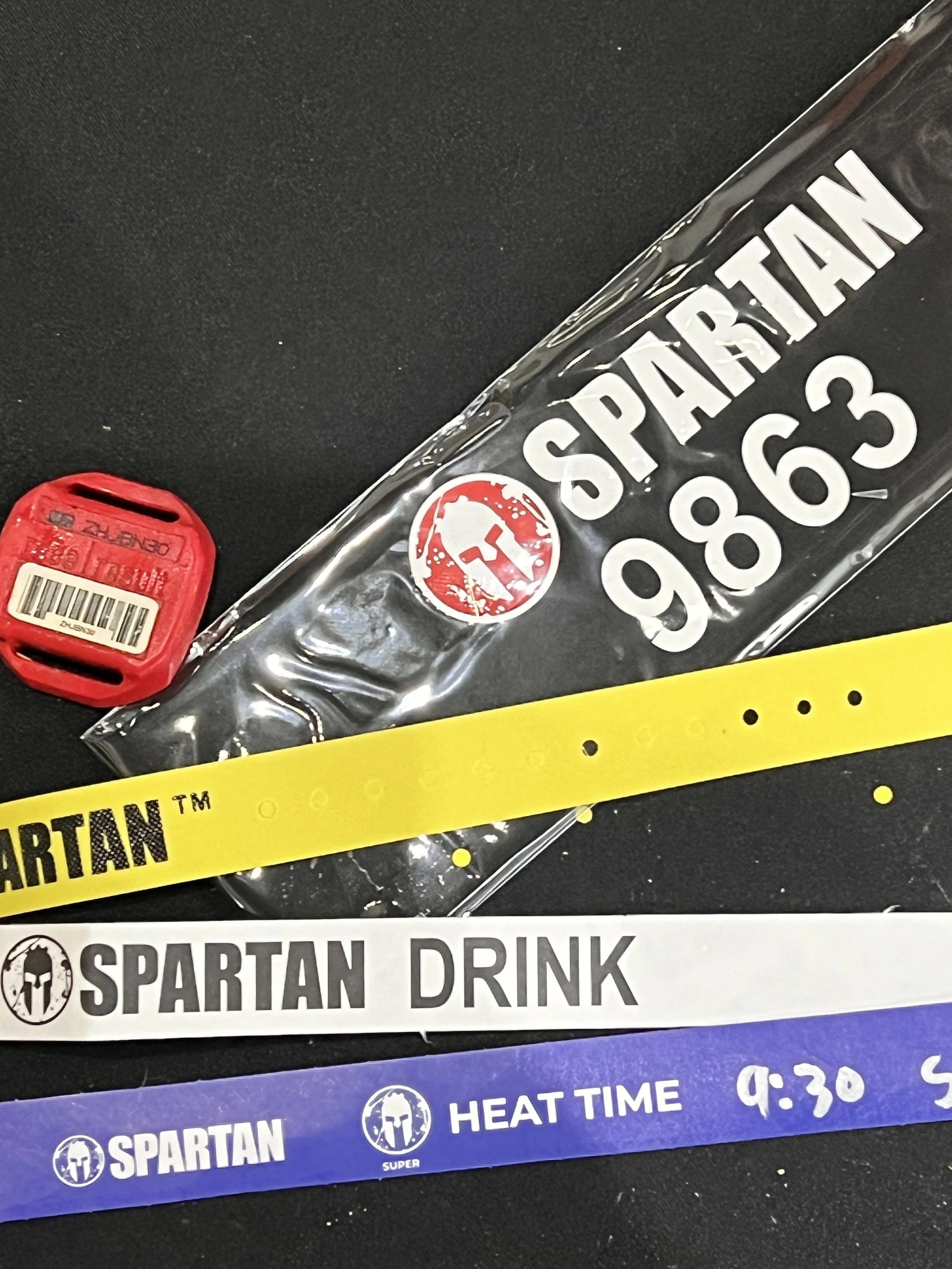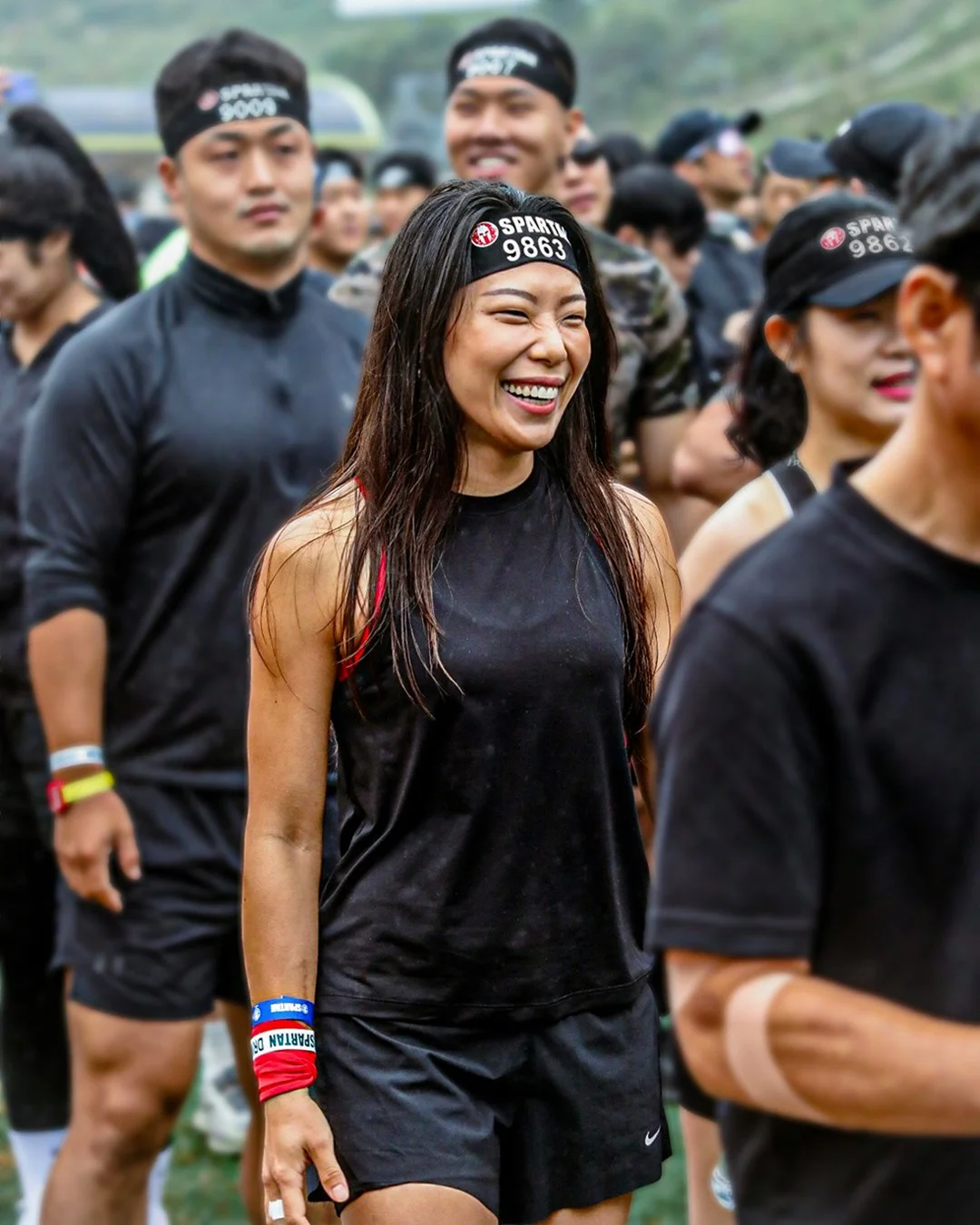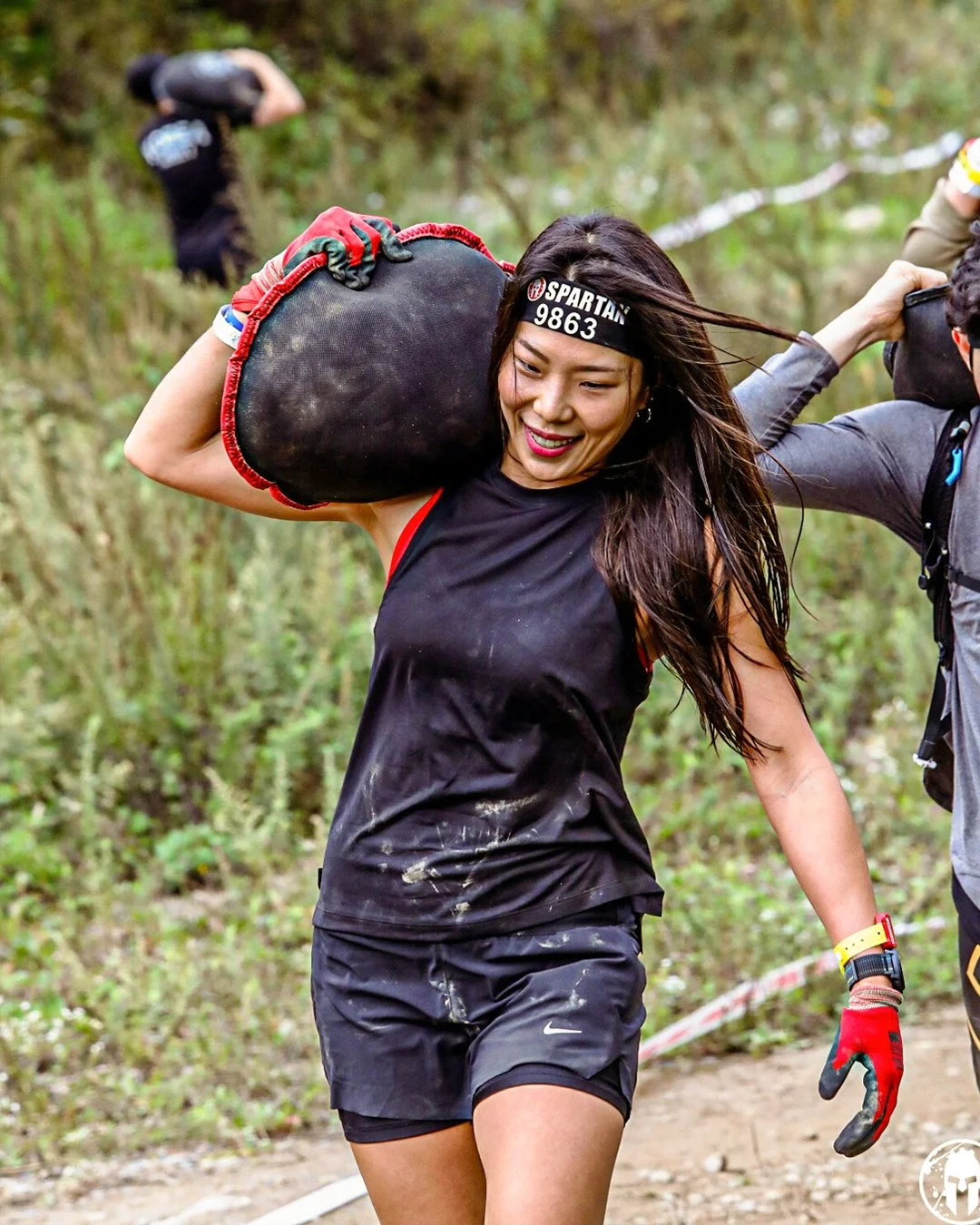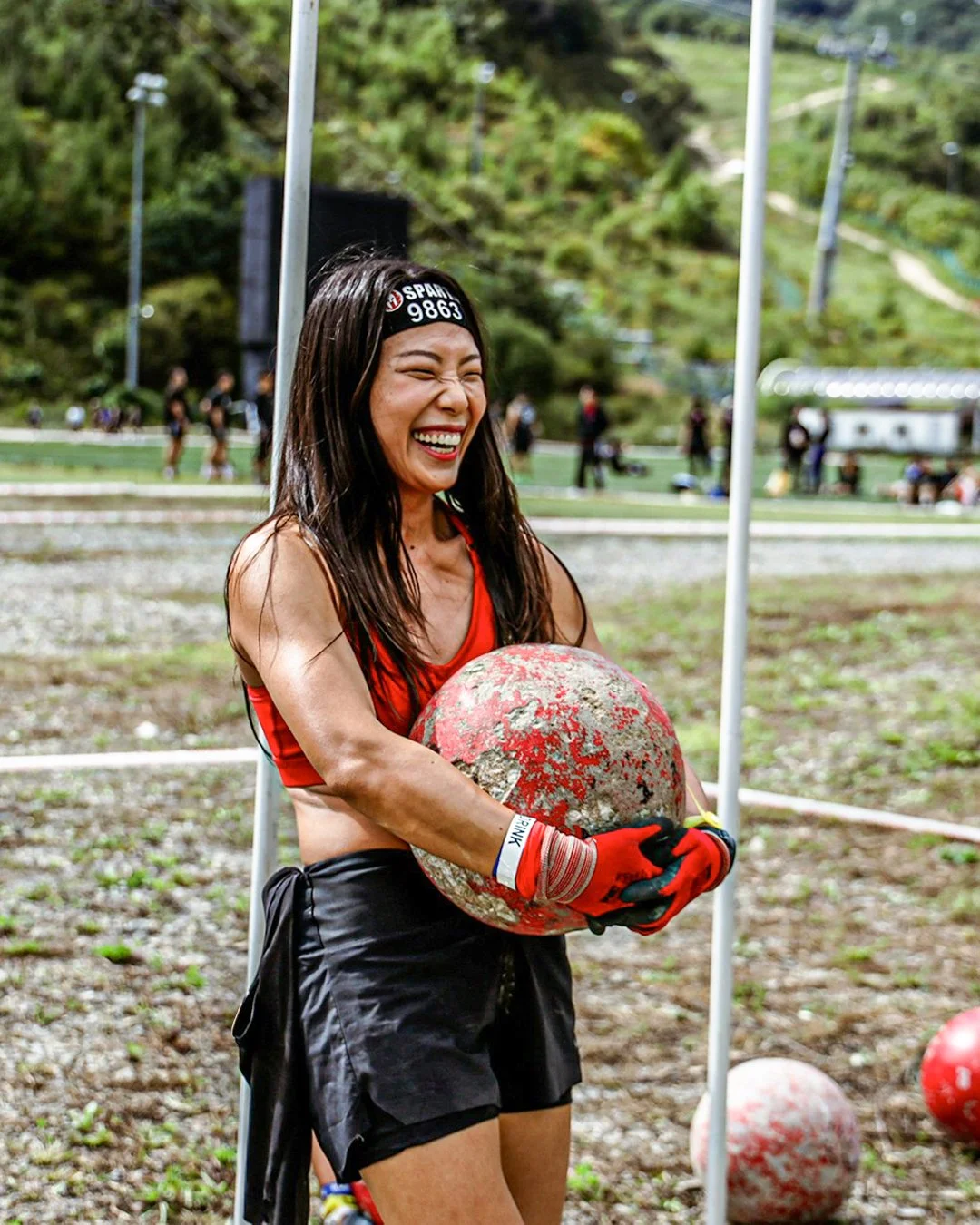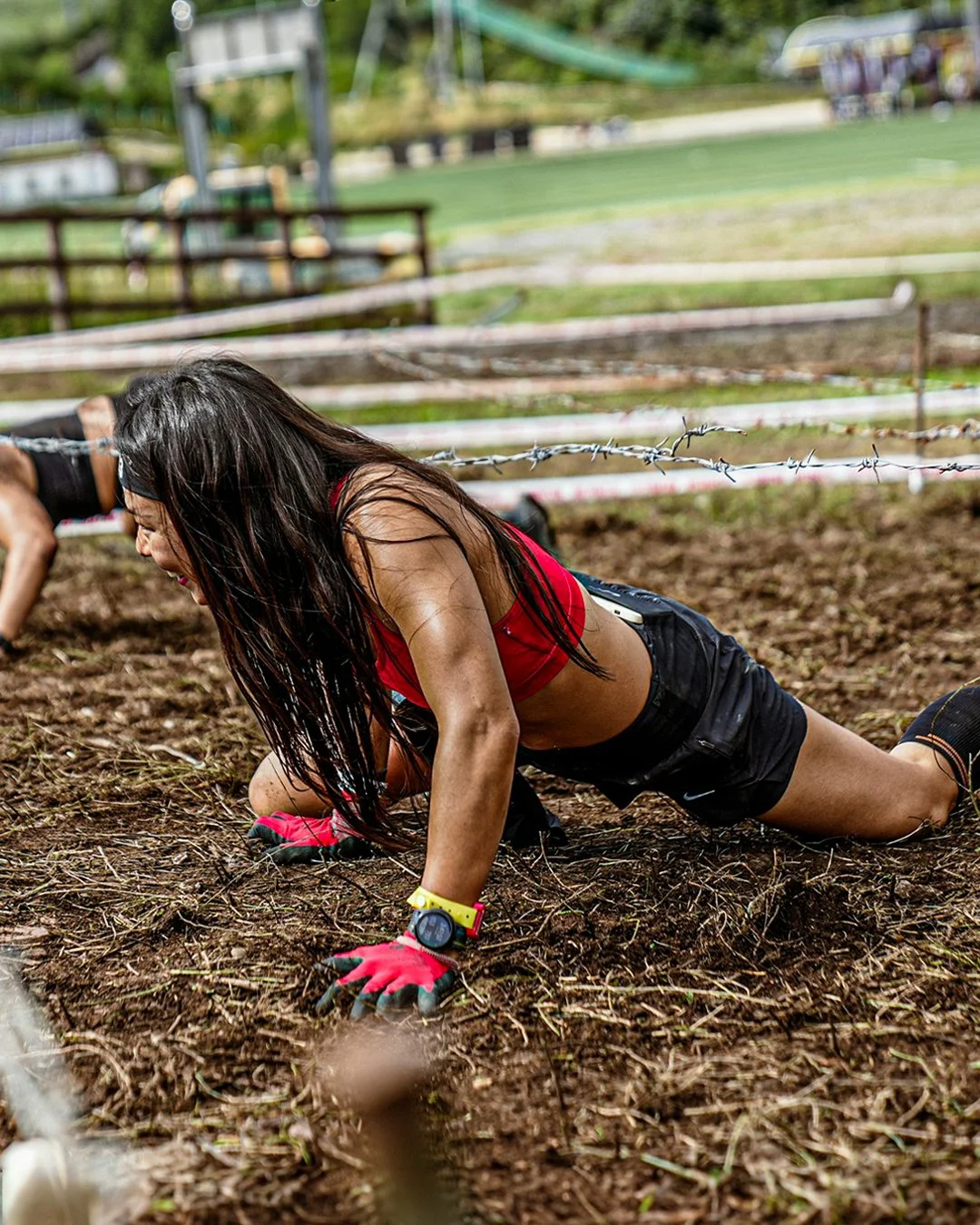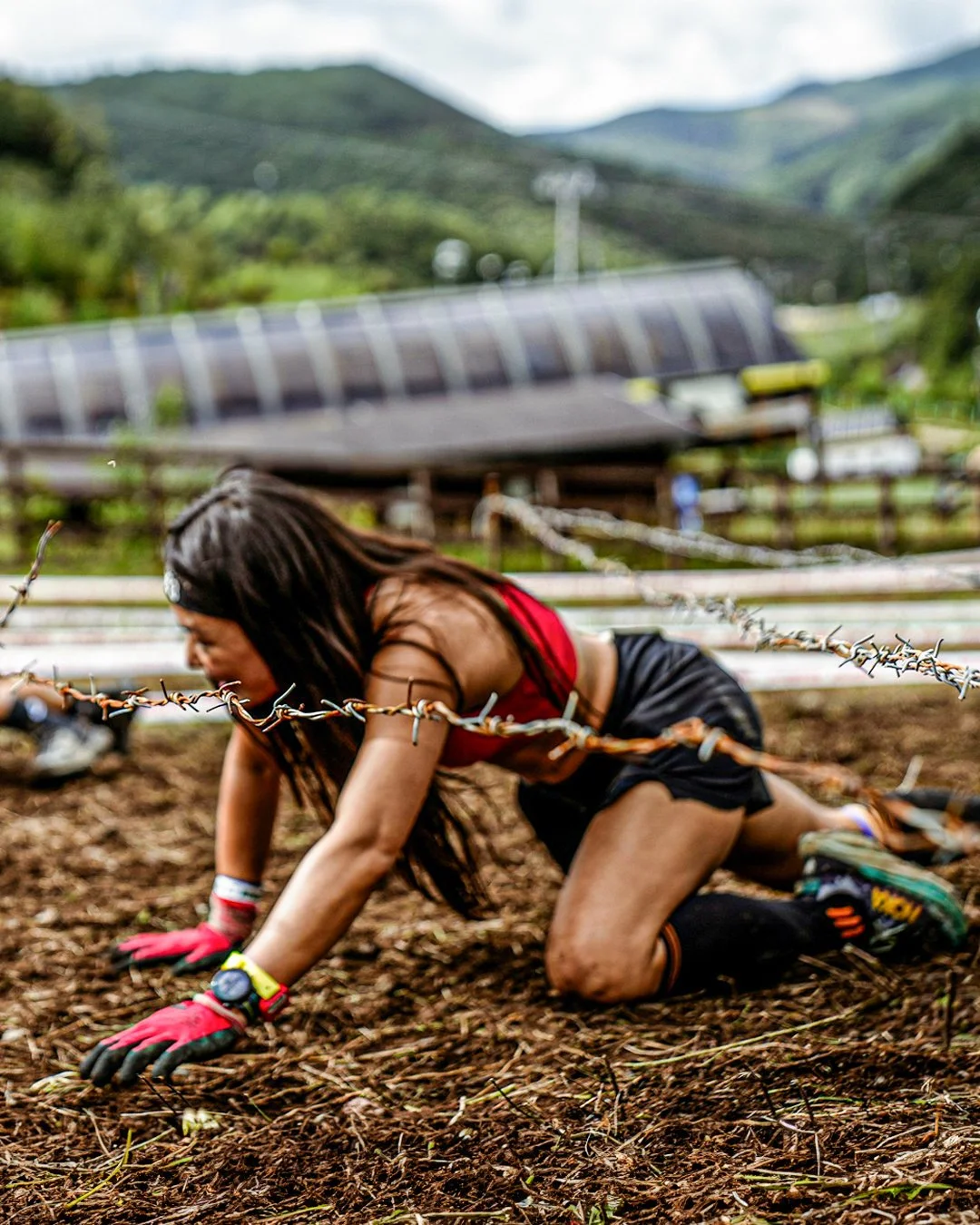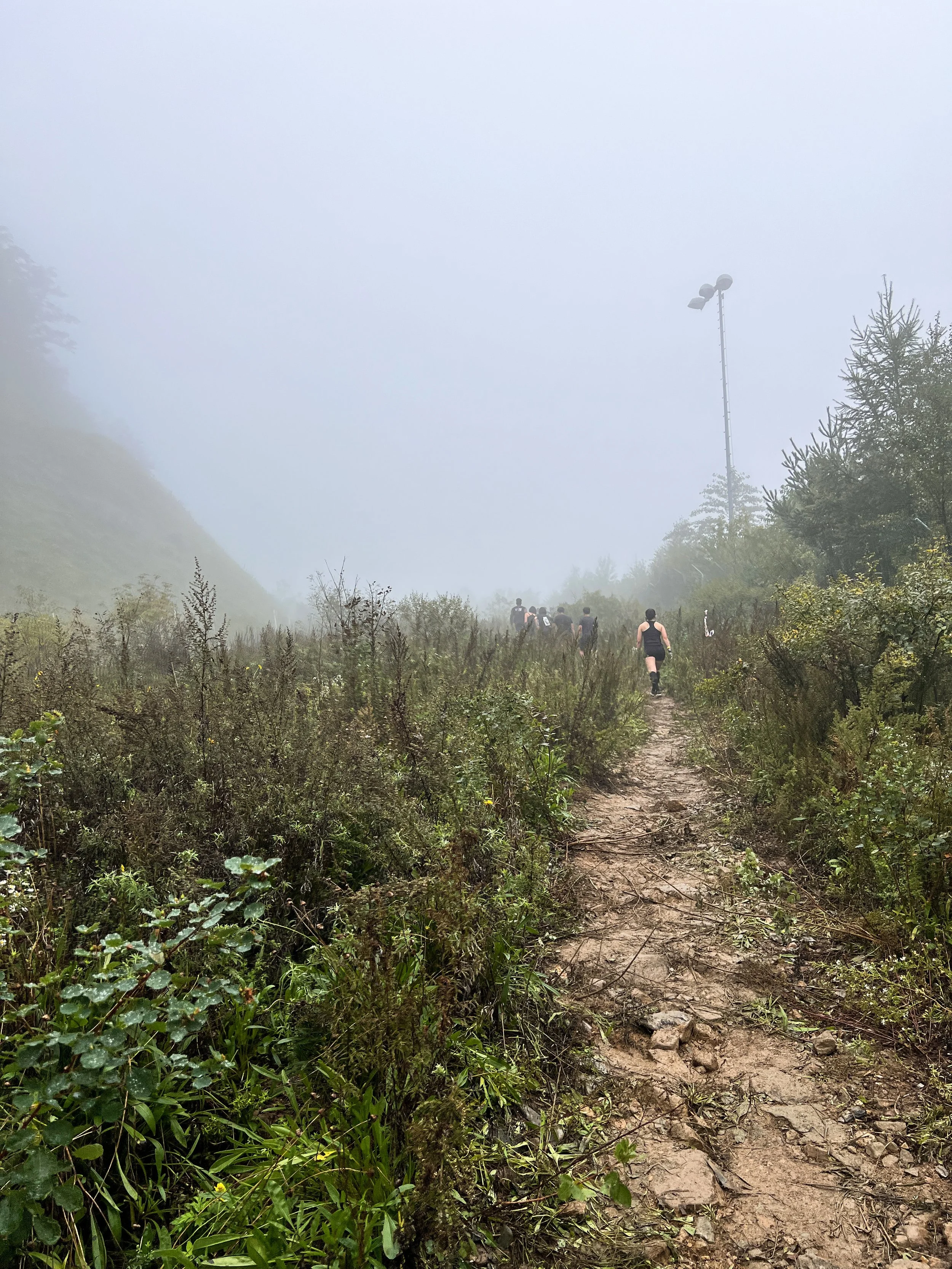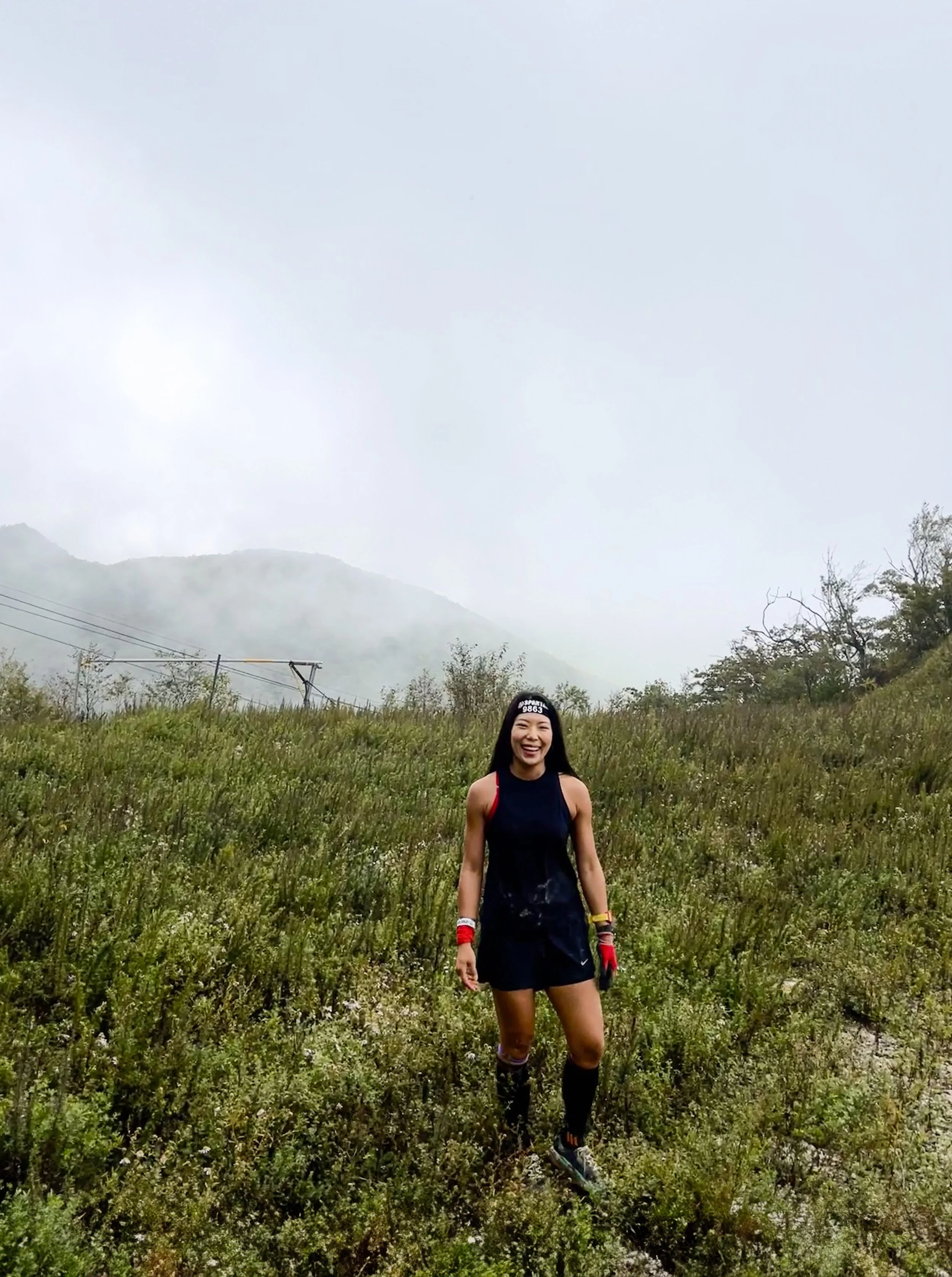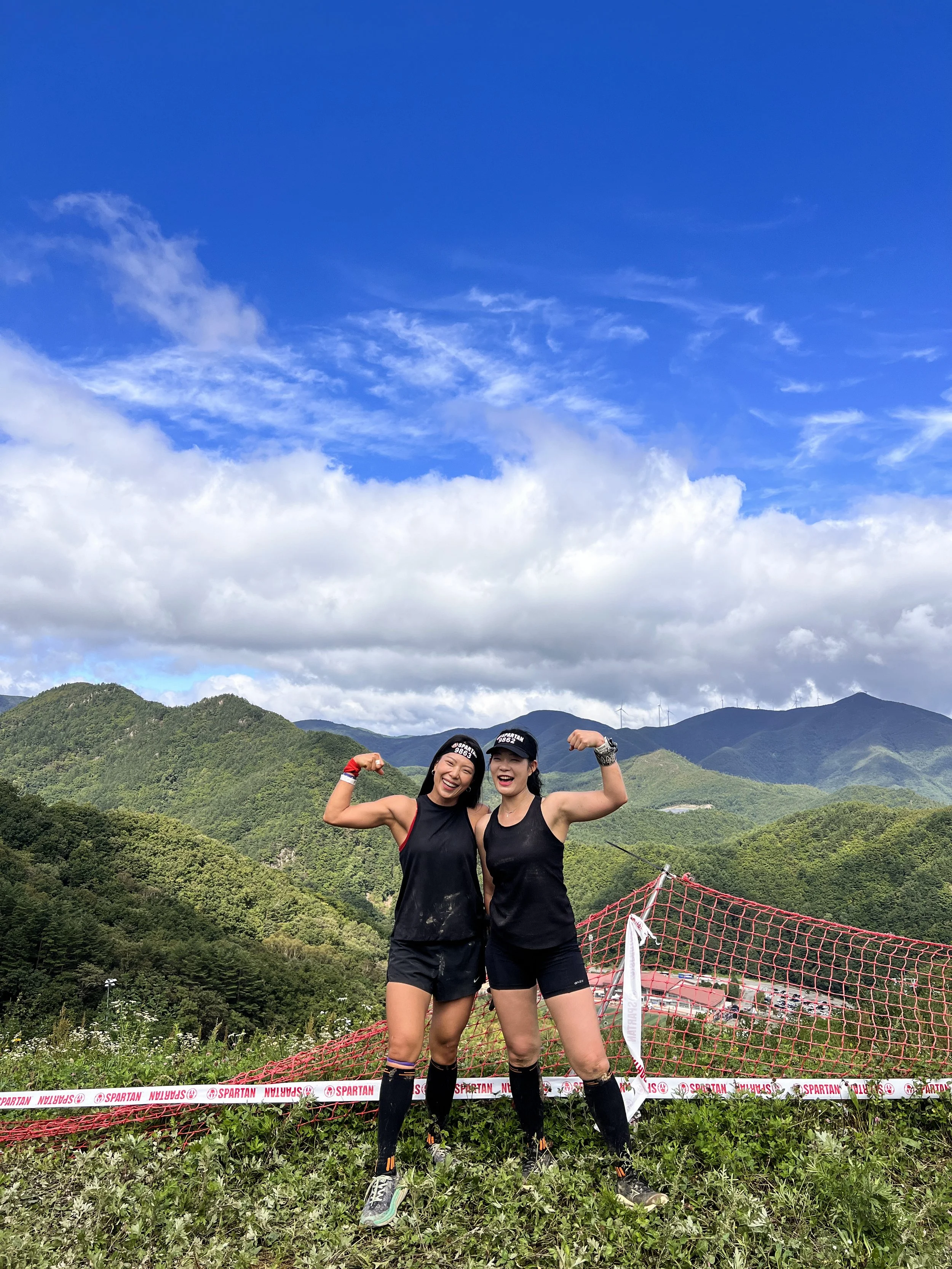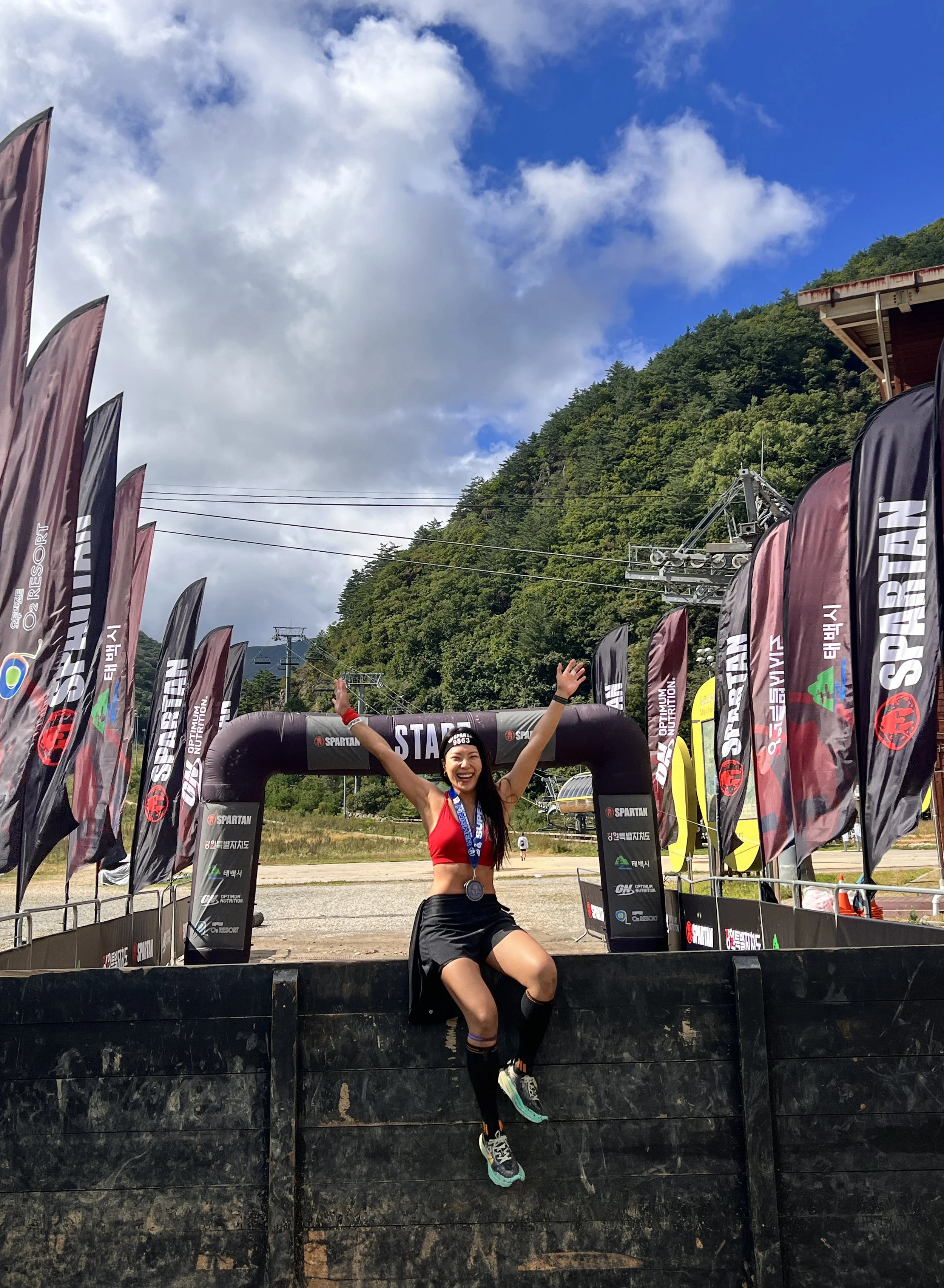A New Challenge in Taebaek:
My First Spartan Race Experience!
( Sept.29.2024 )
The Spartan Race is more than a test of speed—it's a full-body challenge set against nature’s most inspiring backdrops, from rugged mountains to sandy beaches. This year, Spartan Race Korea was hosted at O2 Resort in Taebaek, a city in Gangwon-do known for its majestic mountain views. I opted for the “Spartan Super” 10K course, featuring 25 demanding obstacles, marking my first experience in this exhilarating event.
Just one week before the race, I completed my first 10K trail run—a course with a challenging 1000m cumulative altitude. Conquering that tough route eased my fears, while over a year of CrossFit training fueled my excitement to see how well I could handle each obstacle. However, I still kept a healthy dose of nervousness, knowing that nature can be unpredictable.
More than anything, the race revived memories of carefree days on the playground and in high-school PE classes, reminding me of the pure joy of physical challenges and the fun of sharing that experience with friends.
The Journey to the Start Line with a 4K Downhill Surprise
Race start times were scheduled every 30 minutes from 8:00 a.m. to 12:30 p.m., and my friends and I had signed up for the 9:30 a.m. wave. Since we stayed at the O2 Resort the night before, we left our room around 8:30 a.m. and headed to the race venue.
I had assumed the venue would be just outside our accommodation, but it turned out to be about 4km away—down a winding mountain road. With no shuttle buses or taxis available and no car of our own, our only option was to rely on our legs. Running 4km downhill before the actual race felt like an unexpected challenge, but with no other choice, we decided to embrace it. The morning air was thick with fog, creating an almost surreal atmosphere as we ran through the quiet mountain roads. Surprisingly, it felt like a refreshing warm-up—an unexpected but enjoyable start to the day.
Once we arrived at the race venue, the next step was check-in. The area was bustling with participants picking up their race packets, warming up, and getting ready for the challenge ahead. We could hear the announcer’s countdown and the starting signals for the earlier waves, adding to the excitement. Since we had signed up online in advance, the process was fairly quick—we showed our registration confirmation email and ID, received our timing chips and race bibs, and got wristbands indicating our race category. With everything set, we took a moment to soak in the atmosphere, do some light stretching, and then stood at the starting line alongside other runners, feeling a mix of nervousness and excitement.
Today, I am a spartan 9863!
Aroo! Aroo! Aroo!
After counting down from ten to zero, we all shouted the signature Spartan Race chant together, “Aroo! Aroo! Aroo!” before surging across the start line.
The rain from the night before had left the ground wet and muddy, creating the perfect conditions for a truly “beastly” Spartan Race. The soaked earth tangled with grass added to the wild and unpredictable road conditions. Obstacles, too, were coated in layers of mud transferred from runners’ shoes, turning them into slippery challenges of their own.
Just as seasoned Spartan racers had advised, wearing old shoes I wouldn't mind ruining was a wise choice. Soon after the race began, my feet kept sinking into the thick mud, which clung to my shoes and slowed me down with every step, making it impossible to run as fast as I would on dry concrete. Yet, embracing the natural conditions of the day and competing in a race where no one resisted but simply pushed through was a fascinating experience.
Overcoming the Spartan Obstacles: One Challenge at a Time
We climbed up a hill where grass and mud had been churned up by the footsteps of the Spartans ahead of us. Although this was a "non-competitive" category where everyone who finished was considered a winner, the race atmosphere made me instinctively want to charge forward. But with 12km and 25 obstacles still ahead, I reminded myself to pace my energy—this was only the beginning.
With our shoes already covered in mud, we began climbing a hill where grass and mud had been churned up by the footsteps of the Spartans ahead of us. Although this was a "non-competitive" category where everyone who finished was considered a winner, the race atmosphere made me instinctively want to charge forward. But with 12km and 25 obstacles still ahead, I reminded myself to pace my energy—this was only the beginning.
Alternating between running and walking, we pushed my way up the hill—until we spotted the first obstacle ahead: the Rope Climb.
< Rope Climb >
I had seen people attempt the rope climb in CrossFit competitions, occasionally at the box (CrossFit gym), and on TV variety shows, but I had never tried it myself. Every time I watched, I was fascinated by how smoothly and skillfully they wrapped the rope around their feet—it reminded me of a snake coiling itself. The technique was mesmerizing: stepping on the wrapped rope, extending the body upward using upper body strength, then bending the legs to bring the feet higher and rewrapping the rope in a continuous motion. In a way, it almost resembled the movement of a caterpillar inching its way up.
Standing in line, I watched as others attempted the obstacle ahead. It seemed like mud from runners’ shoes had caked into the rope fibers, smoothing out the rough texture that normally provided grip. With the friction gone, the once-grippy ropes had turned slick and slippery, making the climb even more difficult. Aside from a few men with upper-body strength, most participants couldn’t make it even halfway before sliding back down.
I expected it to be tough, but I still wanted to give it a try. When my turn came, I attempted the climb just as I had visualized in my mind, following the technique I had observed. The result? I managed to wrap the rope around my feet and extend my body upward once, but when it came to hold myself up and pull my knees for the next move, I failed. The rope was far more slippery than it looked, and the climb was harder than I had expected.
Still, trying it firsthand helped me understand some of the mechanics. I realized that creating a solid base with the rope to stand up is crucial. Of course, having the core and upper-body strength to stay steady on a swaying rope was just as essential! At the same time, I wondered—what’s the best way to minimize arm effort in this movement? After two attempts, I let go and came back down. Now, I’m determined to learn the proper technique at my CrossFit box and practice so that next time, I can succeed.
Oh, and technically, failing an obstacle comes with a penalty.
The penalty was either running a penalty loop or doing 30 burpees. But since the ground was too muddy and this was the non-competitive category focused on challenge and fun, there weren’t any enforcers making sure we did them. (Luckily?)
< Plate Drag & Hercules Hoist >
While similar to Rope Climb in terms of pulling motion, grip strength, and upper-body engagement, Plate Drag and Hercules Hoist differ in the direction of pull and the type of load, as both involve moving an external weight rather than lifting your own body.
Within the “Strength” category, both Plate Drag and Hercules Hoist involve pulling heavy weights, but the direction of pulling and the finish technique make each challenge unique. Plate Drag requires pulling a weighted sled horizontally across the ground, while Hercules Hoist involves lifting a heavy sandbag vertically using a rope and pulley system.
Both obstacles also require returning the weight to its starting position, but in different ways. With Plate Drag, you first pull the sled toward you using the rope, then drag it back manually to the starting point without using the rope. In contrast, Hercules Hoist demands grip control and steady strength to lower the sandbag slowly back to the ground without letting it drop.
For Plate Drag, I planted my feet firmly to the ground about twice shoulder-width apart, gripped the rope tightly, and leaned my body backward to pull with force. I honestly didn’t expect it to be that hard, but the wet and muddy ground made a huge difference. If it had been dry sand or grass, it might have slid more easily. But due to the rain from the night before, the sled stuck to the sticky mud, adding extra friction and making it much harder to move.
To make the pull more effective, I used my entire body, not just my arms. Anchoring my feet and using my bodyweight as leverage, rather than muscling through with just upper-body strength, gave each pull significantly more power. Once the sled reached me, I turned around, grabbed the plate directly, and walked it back to the starting point using short, controlled steps to stay stable on the muddy ground.
It reminded me of the tug-of-war games we used to play during school sports days and field trips, and that nostalgia made the challenge even more fun.
Though it was my first time attempting something like the Hercules Hoist, I found the movement similar to the Plate Drag, only in a different direction.
In Plate Drag, I used my bodyweight and lower-body strength to lean back and pull horizontally, digging my feet into the ground for traction. With Hercules Hoist, the pull was entirely vertical, and there was a fence positioned in front where I could place one foot for support.
Just as the pulling direction shifted from horizontal (0 degrees) in Plate Drag to vertical (90 degrees) in Hercules Hoist, placing one foot on the fence allowed me to angle my body backward, almost creating my own 90-degree stance. Instead of pulling while standing straight, I adjusted my posture to lean back against the resistance. It was similar to the body angle I used in Plate Drag, only rotated upward.
Then, when lowering the weight back down slowly, the Hercules Hoist added a challenge of grip endurance and patience. While both obstacles tested pulling strength, Hercules wasn’t just about power. It was about control, especially at the end, when my forearms were already burning, and I still had to ease the sandbag down gently, without letting it slam into the ground.
In terms of strength and muscle, I think my consistent pull-up training, working toward 10 strict bodyweight reps since the beginning of the year, really paid off at this moment. That foundation gave me the upper-body strength and coordination to lift, hold, and control the weight.
That moment reminded me that strength isn't always about explosive power. Sometimes, it’s about stillness, steadiness, and staying composed when your body is screaming to let go.
< Multi Rig & Monkey Bars >
These two obstacles were the most fun and fulfilling for me. Not only did they remind me of my teenage years, when I played with neighborhood friends at the playground after school, but they also required me to observe and test different methods instead of simply relying on instinct to move forward.
At first, I thought the rubber-coated gloves I brought for extra grip and protection would help me hang on more easily. However, to my surprise, the gloves stuck to the obstacles while my hands slipped out of them, making them completely useless. Right after the first grab,I found that tackling these obstacles with bare hands was the better choice.
Another challenge I hadn’t anticipated was the distance between the rings and bars. Unlike those on elementary school playgrounds, these were spaced much farther apart than I expected. As soon as I stepped onto the starting platform and reached for the second, I realized it was almost impossible to move forward with a static approach. I needed to generate extra momentum or use a more efficient body movement strategy to progress.
The first of the two obstacles, the Multi Rig, presented a unique challenge. The rings weren’t fixed in place but were suspended from ropes, allowing them to swing freely. As they moved, the distance between rings constantly changed, alternating between far apart and close together.
I quickly realized that grip strength alone wouldn’t get me across. Instead of relying solely on upper-body strength, I needed to generate momentum and maintain controlled swings, using the stronger muscles to move forward efficiently. To do this, I tried to engage my core and legs to create a pendulum-like motion, building momentum with each swing. Rather than reaching randomly, I timed my transitions to the next ring at the peak of my swing, when the two rings were closest together. This strategy helped me conserve energy, reduce strain on my arms, and move more smoothly across the rings.
Then I faced the Monkey Bars in the later part of the race. At first, I tried to tackle them just as I would on a playground, simply reaching out with my arms to move forward. However, I quickly realized that this wasn’t the playground version—this was the Spartan version. Before my arms got too tired, I tested with a few different techniques, including some I had learned in CrossFit. But it didn’t take long to realize that none of them were working for this obstacle.
Then, I thought back to the Multi Rig, a previous obstacle with a similar swinging and moving forward motion. I decided to apply the same strategy but with bigger movements.
The key difference, however, was that in the Multi Rig, the rings were attached to ropes, which allowed for a larger swinging arc since the radius was equal to the rope’s length plus my arm’s length. But this time, with only my arms attached to a fixed point, the radius was much shorter, just my arms. This meant that to successfully reach the next bar, I had to use more power or generate a larger movement to create a bigger arc and cover the distance.
Facing an unexpected challenge with only a limited resource(my muscle power), quickly thinking of solutions, and testing them within seconds to solve the problem gave me an incredible thrill and excitement. When I finally rang the bell at the finish, it was one of the most rewarding achievements among all the obstacles.
< Sandbag Carry & Log Carry >
While the race included several types of carries, I found these two to be similar in how the weight was lifted and carried.
To bring the weight up, I started as if performing a deadlift—engaging my core, keeping my back straight, hinging at the hips, and driving through my legs. Just before reaching a fully upright position, I explosively extended my hips, almost like striking the weight with my core, to generate momentum and lift it to shoulder level. As I received the weight onto my shoulder, I slightly bent my knees and lowered myself to absorb the impact, reducing the shock on my shoulder.
This movement felt similar to a power clean in CrossFit, except instead of bringing a barbell to both shoulders, I was lifting and resting the weight on one shoulder. Using this technique allowed me to lift the weight to the shoulder efficiently while minimizing the risk of injury.
Since forearm muscles fatigue faster and require more recovery time when overworked than larger upper-body muscles, carrying the weight on my shoulders instead of holding it in my arms helped conserve grip strength while efficiently carrying the load. Also, as I carried the sandbag and log along the designated course, I had to shift the weight from one shoulder to the other once or twice to distribute the strain more evenly.
< Atlas Carry & Bucket Carry >
Then there were obstacles where I couldn’t lift the weight onto my shoulder and had to carry it in my arms instead. The Atlas Carry and Bucket Carry required much heavier loads, making even lifting them to an upright position a challenge.
To lift the weight, I engaged my core tightly, pushed harder through the ground with my feet, and used my legs and back muscles to generate power. While carrying the load, I kept my arms close to my body, allowing me to engage my lats and back muscles instead of relying only on my arms.
And my trick? Laughing out loud!
A burst of laughter always helps me forget pain and discomfort—probably thanks to a rush of endorphins—and even makes tough challenges more enjoyable!
< A-Frame Cargo & Stairway to Sparta >
Within the 'Climbing' category of Spartan Race challenges, these obstacles required both physical strength and courage to overcome height. While both involved climbing, they presented different challenges.
The A-Frame Cargo is an A-shaped structure made of webbing, meaning the steps and holds are unstable and prone to shaking, especially when others are climbing nearby. Since the structure is angled diagonally, the ground remains in sight as you ascend, making the height more noticeable and potentially intimidating.
To counter this, I focused my gaze on the webbing and upward toward the top of the structure, avoiding looking down to prevent intimidation. Moving with controlled, deliberate steps rather than rushing helped minimize swaying and maintain balance.
Unlike the A-Frame Cargo, which sways and challenges balance, the Stairway to Sparta tests explosive strength and grip power from the very start. This obstacle is more like a ladder climb, but with an added challenge—a vertical wall at the base that must be scaled before reaching the ladder. I had to generate a strong jump and firm grip, and even used a foot hook to pull myself over the wall before continuing up the ladder.
The transition over the top was another tricky part—unlike the A-frame, where the incline provides a natural way down, I had to stay close to the structure to avoid leaning too far back and losing balance. Keeping my core engaged and my grip steady while carefully shifting my weight helped me move safely over the top.
Despite their differences, both obstacles tested not only grip endurance and balance but also the mental challenge of overcoming the fear of heights.
< Z-Wall & Olympus >
While both Z-Walls and Olympus are similar to bouldering in that they require moving sideways while staying close to the wall using holds, they differ in how they are navigated. Z-Walls involve both handholds and footholds, allowing you to grip and step on a vertical wall, whereas Olympus relies solely on handholds along a tilted surface.
I had visited an indoor climbing center’s open session a few times for fun with friends, but I never learned any professional techniques or tips. So when I first faced Z-Walls, I couldn't help but think—I wish I had taken some bouldering classes and learned proper technique! But there I was, with no training to rely on, and the only thing I could do was trust my instincts.
I stepped onto the first foothold and grabbed the first handhold to start. From there, I just focused on what felt natural. There may have been a more efficient or faster way to tackle it, but what worked for me was staying close to the wall by engaging my core, reaching for the next handhold, and hopping my feet to the next footholds with control.
Compared to Olympus, Z-Walls felt much more approachable. Being able to step on footholds allowed me to distribute my weight between my hands and feet, rather than relying entirely on grip strength. And mentally, it felt more like a puzzle I could take my time with—more technical than brutal.
But Olympus was a different story. Despite their similarities, Olympus proved to be far more difficult for me. Unlike Z-Walls, where I could rely on my feet for support, Olympus demanded far more upper-body engagement, making it a true test of grip strength and endurance.
As part of the 'Traverse' category, Olympus was an advanced-level challenge, included only in the Super (10K) and Beast (21K) races—not in the Sprint (5K). The rule was simple but brutal: move across using only your hands to grip the holds—your feet were not allowed to touch them.
However, the angled wall where my feet made contact was far more slippery than I expected. With only my hands supporting my body, my legs and feet felt like dead weight, pulling me downward.
My strategy was to keep my core as close to the wall as possible, tuck my legs in instead of letting them hang, and move quickly to conserve grip strength. I wasn’t entirely sure of the body mechanics behind it, but it seemed to work. Perhaps keeping my legs tucked helped create a stable triangular structure with my arms and core for better balance, or maybe it shifted my center of gravity upward, reducing the downward pull of my lower body. Either way, my body instinctively figured it out, and it worked.
After ringing the bell, I had to pause to catch my breath, like I’d just finished a sprint. It was intense.
Looking back after the race, Olympus stood out as the most memorable obstacle—not just because it was the hardest, but because it required a burst of concentration and energy while challenging me to instantly find the best way to conquer it with my body.
< Walls >
Throughout the course, there were walls of varying heights, ranging from 4 feet to 8 feet. Since the top of most walls was within reach with a jump, I ran toward the wall, using my momentum to assist my small leap and grabbed the top edge. Thankfully, my trail running shoes provided solid traction, helping me stick to the wall’s surface as I climbed. Pressing my foot against the wall for support, I pulled myself up using my arms and back until I could lift my chest over the top. On the way down, if there was a foothold, I used it like a ladder. If not, I jumped and landed on the balls of my feet before sinking into a deep squat, spreading out the impact to absorb the shock.
I watched as some racers helped each other over the walls, using different techniques to assist their teammates. Some locked their hands together, palms up, forming a step for others to push off from. Others crouched down, offering their backs as a platform so teammates could step up and reach the top. Some simply gave a strong push to help lift others up.
Seeing people selflessly support one another and find solutions together was truly touching. I, too, helped my friend climb over by pushing her up.
While I was grateful for my ability to tackle the obstacle alone, I found even more joy in helping someone else overcome the challenge. Conquering the course was fulfilling, but helping others conquer it was even more rewarding.
< Crawl >
There are usually two main ways to get through a crawl obstacle: crawling on your back or crawling on your belly. Crawling on your back means there is no way around it. You will end up rubbing your entire back against the muddy ground from start to finish. So I chose the belly-side crawl, but with one condition. I was not going to drag my whole body through the mud.
When I reached the barbed wire crawl, I had one clear goal in mind: do not get completely covered in mud. So I went with a somewhat strategic and definitely cleaner approach. Instead of lying flat on the ground, I moved in a wave-like motion. I lowered my body gradually, starting with my head, then shoulders, then hips, only when needed to pass under the wires. As soon as I cleared each section, I lifted myself back up in reverse, trying to stay off the muddy ground as much as possible.
It was not the fastest method, and it definitely made my legs burn, but it worked. I got through the obstacle without dragging my whole body through the mud, and honestly, that felt like a small victory in itself. The crawl demanded a strange combination of focus, rhythm, and quad endurance. I had to stay alert and responsive, constantly reading the wire height and adjusting my movement in real time to avoid getting caught or sinking too low into the mud.
< Hidden Obstacles: The Foggy Trail >
Beyond the obstacles, the 12K trail itself was a major part of the challenge, demanding both physically and mentally, yet unforgettable in its own right.
At one point, we began a long ascent through a narrow, steep mountain path, completely blanketed in fog. Visibility dropped to less than 10 meters. The climb was too steep to run, so I settled into a steady, brisk pace on foot. The higher we climbed, the colder it became. The air turned sharp, and the fog thickened. I wanted to stop and catch my breath, but I could feel my body temperature dropping fast. The idea of hypothermia suddenly didn’t feel so far-fetched. Just an hour earlier, it was hot at the starting line, but up in the mountains, it was a totally different story. I regretted not packing an extra jacket.
I fueled up with an energy gel and kept pushing upward without rest. At the top, there was a checkpoint with water, bananas, and, thankfully, a small shelter that served as both a restroom and warming spot. I stepped in briefly just to feel some warmth again, but the thought that the race wasn’t even halfway over kept me from staying long.
Once back outside, the fog was still thick, but the downhill terrain ahead allowed me to run. The trail was filled with rocks, uneven ground, and small hazards that made every step a calculated move, so I shortened my stride and kept a fast, light pace. As I ran, my body temperature rose again, and the farther I descended, the warmer the air became. By the time I reached the base, the weather had flipped once more. The fog had cleared, the sun was out, and it was suddenly hot again, like nothing had happened at all.
3 Hours, 40 Minutes, and a Whole Lot of Heart
The race ended with the iconic “fire jump.” As I crossed the finish line and looked at my watch, I saw that the total race time had stretched over 3 hours and 40 minutes. Some of that time was spent waiting in line for obstacles, catching my breath, and regaining focus, but still, I was genuinely proud of myself for staying mentally present and physically steady throughout such a long, intense course.
To my surprise, I completed every obstacle except for two—the rope climb and spear throw. It amazed me how my body seemed to remember movements I hadn’t practiced in years, as if all those hours I once spent playing on playgrounds and school fields were still living in my muscles.
I was especially thankful for the friend who ran the entire race alongside me. We cheered each other on, shared tips, and sometimes literally helped one another over obstacles. Most of all, during the freezing, exhausting trail run through the mountains, just knowing I wasn’t alone gave me the strength and comfort to keep moving forward.
Next time, I want to conquer that rope climb—maybe learn the proper technique and finally ring that bell. I’m also starting to wonder… what would it feel like to compete in the competitive category? I think I’d love to experience that extra rush of adrenaline and push myself even further.
